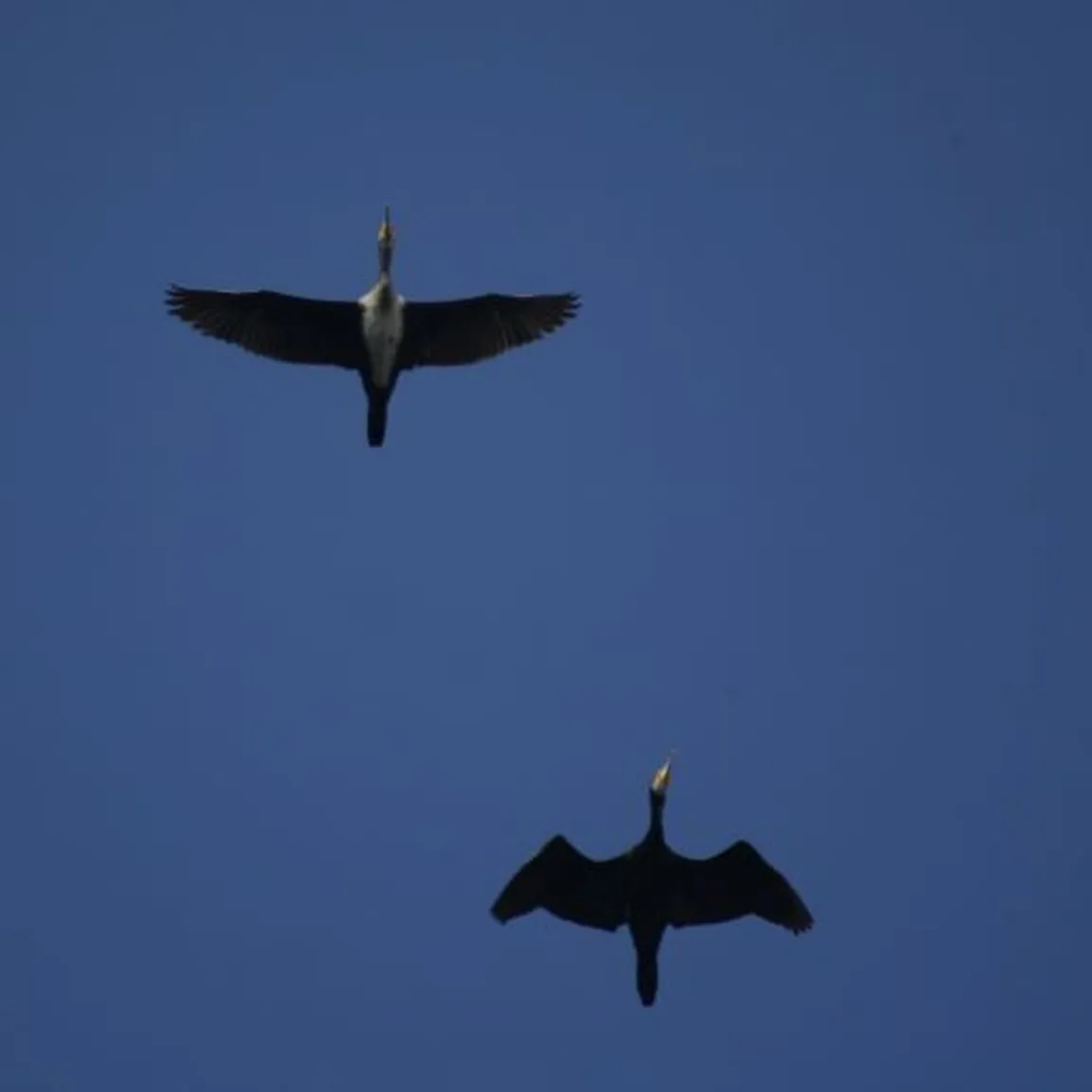Cormorant (Phalacrocorax carbo) is a very large bird, which from the hooked-curved tip of the beak to the end of the rounded tail measures 77 to 94 cm, and the wingspan ranges from 121 to 194 cm. Adult cormorants are almost entirely black, only their cheeks are covered with light plumage, at the base of the lower jaw they have a yellow patch of bare skin. In flight, the cormorant's plumage is more lustrous – the black-edged plumage on the wings gains a bronze sheen, the plumage along the body leans somewhat toward blue and green; the cheeks become distinctly white. During the breeding season, adult individuals acquire white plumage also on the neck and head and a white patch above the legs. Young cormorants are paler, especially on the neck, their belly is often completely white. In the year we will recognize cormorants by their somewhat bent or 'broken' long neck and by their flight in a wedge-shaped formation. Cormorants are also known for perching on trees, crags and rocks with wings spread. Then they dry their plumage, which got wet during dives, as the poorly developed uropygial gland prevents cormorants from full impregnation of the plumage, which is characteristic for other aquatic birds.
This is a diurnal bird that goes out to hunt exclusively during the day. While diving, the cormorant mainly preys on fish, but it also hunts other aquatic animals, for example amphibians and crayfish.
Cormorants have a very wide distribution and live on all continents, except South America and Antarctica. They inhabit both continental waters and the nearshore belt of the sea, but avoid shallow and very deep bodies of water and small and overgrown waters. In the temperate zone of the northern hemisphere they usually nest between April and June, elsewhere depending on local climatic conditions. A nest made of twigs and other plant material is built in a tree, on a rocky ledge, less commonly also on the ground. Cormorants often nest with other bird species in colonies of several tens to several hundreds of pairs. Populations of cormorants living in southern regions do not migrate, while northern populations retreat south before winter cold.
Kormorants, being predominantly fish-eaters, have fallen into disfavor with fish farmers and fishermen, who still mercilessly persecute them in some places. With appropriate preventive measures, especially by preventing perching on fish ponds, it is possible to end or at least mitigate the conflict between cormorants and humans.


